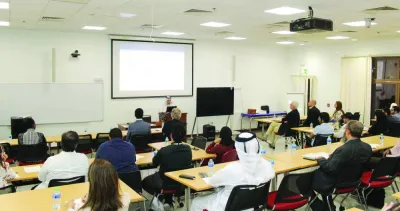Qatar’s bid to host the 2022 FIFA World Cup told the world to ‘Expect Amazing.’ A preview of what is in store for the mega sporting event three-and-a-half-years down the line was put on show by the nation last Thursday when Al Janoub Stadium in Al Wakrah was opened with the staging of the prestigious Amir Cup final. His Highness the Amir Sheikh Tamim bin Hamad al-Thani tweeted on his verified account ahead of kick-off that the ground’s name would be changed to ‘Al Janoub Stadium’ meaning ‘stadium of the south’. The 40,000 capacity stadium, located south of Doha, is the first of the 2022 Qatar World Cup to be fully built and the second to be ready to host the FIFA World Cup following the announcement of opening Khalifa International Stadium in May 2017.
As rightly pointed out by the Secretary-General of the Supreme Committee for Delivery & Legacy (SC), Hassan al-Thawadi, the inauguration of Al Janoub Stadium is a significant new milestone in Qatar’s trip to host the World Cup 2022. As recalled by the CEO of World Cup Qatar 2022, Nasser al-Khater, work on the stadium started in 2014 and its completion is an achievement that is a source of pride for every stakeholder. The construction involved thousands of people from all around the world. Above-ground concrete work started in February 2015, laying the foundations for the extraordinary stadium we see today. The two main roof supports were raised in September 2017. Then in May 2018, with a year to go until the stadium opened its doors, Al Janoub Stadium’s distinctive roof was installed. In March 2019, the pitch was laid in just nine hours and 15 minutes. The turf used was grown at a local turf nursery.
Designed by late Iraqi architect Zaha Hadid, Al Janoub Stadium’s graceful lines and flowing curves were inspired by traditional dhow boats weaving through the currents of the Gulf. This futuristic arena alludes to Al Wakrah’s seafaring past a spectacular bridge between old and new, and a strong visual representation of Qatar’s drive to reach beyond its shores. The view from inside the stadium is just as stunning, where bowed beams hold up the roof, resembling a ship’s hull and allowing light to flood into the arena. Plenty of light doesn’t mean too much heat though.
Alongside an innovative cooling system, ingenious design plays a part in keeping fans, players and officials comfortable. Detailed micro-climate analysis informed the arena’s shape, with aerodynamics and optimal shading from the roof (which incorporates a minimal amount of glass) making a significant contribution to temperature control. Sustainability runs right through this arena and the surrounding complex, married with eye-catching design. The whole shape of the stadium hides a remarkably green temperature control method, making its clever aerodynamic design do much of the work. The roof provides significant shade, taking the weight off the advanced cooling systems.
After the 2022 FIFA World Cup Qatar it will become Al Wakrah Sports Club’s home, with a reduced capacity of 20,000. The other 20,000 seats will be donated to football development projects overseas. A school, wedding hall, cycling, horse riding and running tracks, restaurants, marketplaces, gyms and parkland are just some of the new amenities that are being developed to accompany Al Janoub Stadium.



